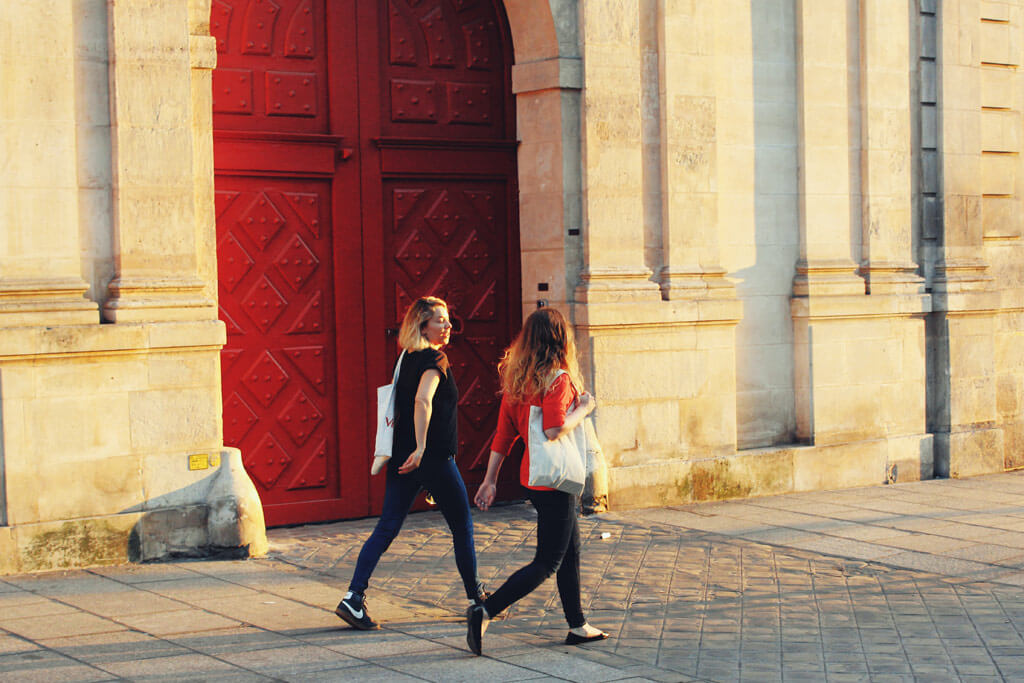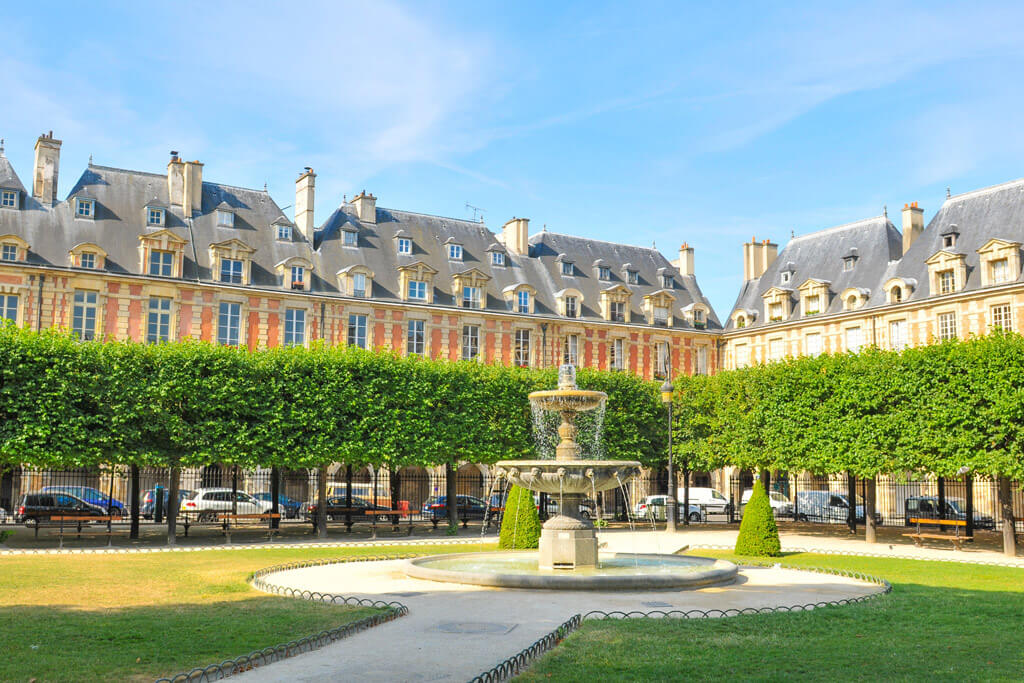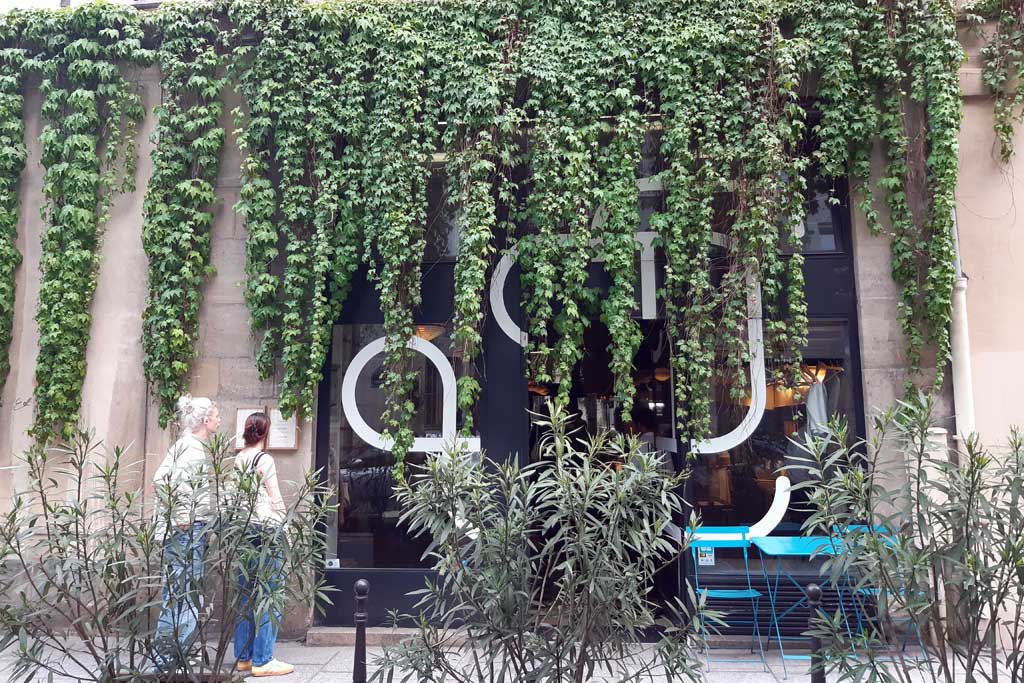Visit Le Marais – Paris’ Most Authentic District
With its elegant architecture, hidden gardens, and beautiful squares, Le Marais is one of the best neighborhoods in Paris to visit. Le Marais used to be where the bourgeois lived, and its wealthy past can be seen in the elegant private mansions.
Located on the Right Bank of the Seine River, Le Marais encompasses parts of the 3rd and 4th Arrondissements, and it is best explored on foot.
If you are looking for the best places to explore in Le Marais, this guide is perfect for you! I’ve put together this self-guided walking tour of Le Marais, including a map, that you can use entirely for free. Le Marais has many beautiful corners, and you don’t want to miss any of them!
Are You Planning a Trip to Paris Last Minute?
If you are booking a last-minute trip to Paris, we’ve got you covered! Below are our must-guides, top tours, hotels, and more:
» Plan: Paris Travel Planner; Paris Arrondissements Guide; Check out the best Paris Metro tickets for tourists
» Book your flight tickets with Omio; book your train tickets with Omio
Book your transfer from the airport to the city with Welcome Pickups.
» Where to Stay: Best Districts to Stay in Paris
- Le Pavillon de la Reine (historical 5-star hotel in Le Marais)
- Hotel La Comtesse (mid-range hotel with Eiffel Tower view from all the rooms!)
- Hotel Ducs de Bourgogne (super central 4-star hotel near the Louvre)
» Top-Rated Paris Tours & Tickets:
- Louvre Museum Skip-the-Line Ticket
- Eiffel Tower Summit Access Ticket
- Seine River Night Cruise
- Catacombs Skip-the-line tour with VIP access to restricted areas
Want skip-the-line access at museums & attractions in Paris? Get your hands on a Paris Museum Pass!
» Don’t leave without travel insurance! Safety Wing works well for long and short trips (starting with a minimum of 5 days). SafetyWing covers COVID-19 for new policies purchased, and unplanned quarantine is covered, too.
Map of Le Marais Paris Walking Tour
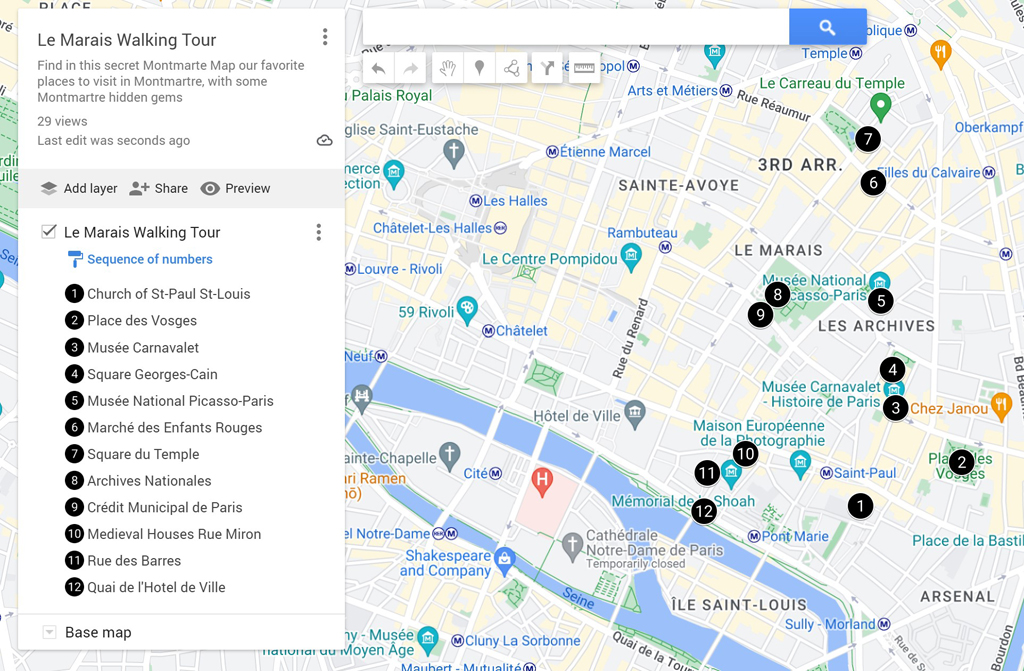
Click here to view this map of Le Marais Walking Tour on Google
Le Marais Walking Tour (Self-Guided)
Start this Le Marais free walking tour from the metro station Saint Paul (Line 1).
1. Paroisse Saint-Paul Saint-Louis
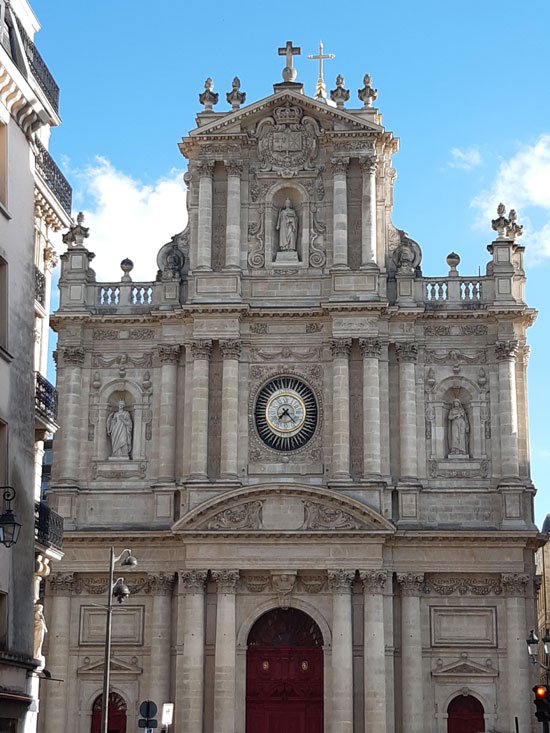
Right beside the metro entrance is the beautiful Paroisse Saint-Paul Saint-Louis, a 17th-century church with an important record: it was the first church in Paris to break away entirely from the Gothic style and use the new Baroque style instead.
The baroque façade, with its massive red door and asymmetrical clock, is truly stunning. Step inside the church to admire the impressive 59-meter dome shining light over the altar and Delacroix’s astonishing painting ‘Christ in the Garden of Olives.’
Take the time to walk around the church: there are other artworks worth exploring!
From the Church, return to the main street (Rue Saint-Antonie) and take the second street on the left (Rue de Birague) to get to Place des Vosges.
2. Place des Vosges
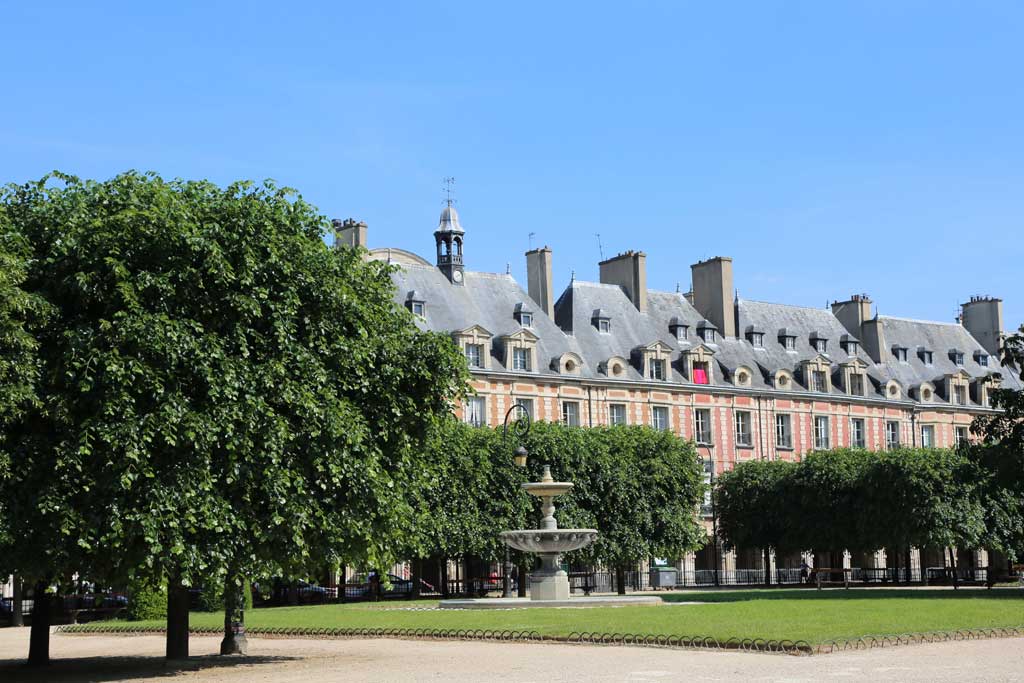
Place des Vosges is one of the Royal Squares in Paris. It is also Paris’ oldest public square, commissioned by King Henri IV in 1605. Originally called Place Royale, today it is one of Paris’ most beloved squares and gardens where you can relax and have a picnic during the good season.
The architecture of this square is quite unique. Its perfectly symmetrical layout includes buildings with red brick exterior walls and slate roofs built over vaulted arcades. Today, these buildings house restaurants, cafés, and art galleries.
On one of the corners of Place des Vosges, you will find Maison de Victor Hugo (6 Place des Vosges), where the famous writer lived. This house museum is free to visit.
From the square’s southwest corner, you can access the Hôtel de Sully (5 Place des Vosges), a beautiful palace with a free-access courtyard with sculptures.
Exit Place des Vosges from the top left corner and walk straight to arrive at the Musée Carnavalet.
3. Musée Carnavalet
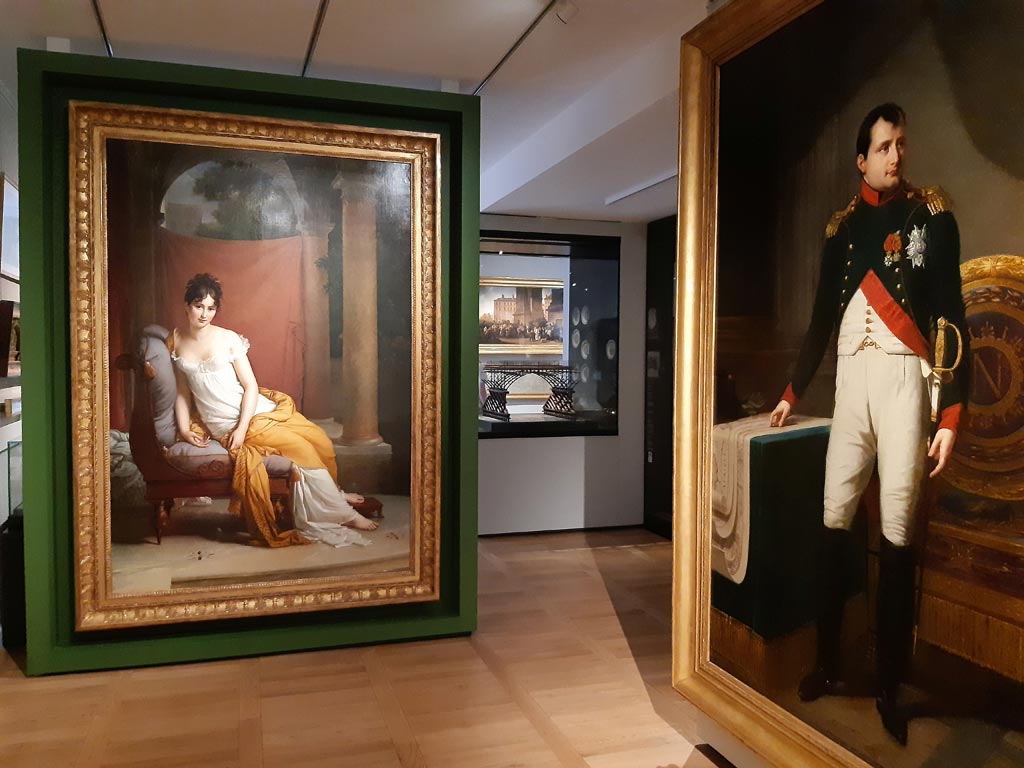
The Musée Carnavalet is one of the best museums in Paris to visit if you are a history buff. This museum offers insight into the city’s history.
Its impressive permanent collection, which can be visited for free, boasts about 2,600 paintings and 2,000 sculptures scattered around 100 rooms.
The French Revolution exhibit is particularly interesting. It features detailed scale models of objects such as guillotines and replicas of the Bastille prison and King Louis XVI’s prison cell.
Your next stop, Square Georges Caïn, is on the parallel street on the left (Rue Payenne) from Musée Carnavalet.
4. Square Georges Caïn
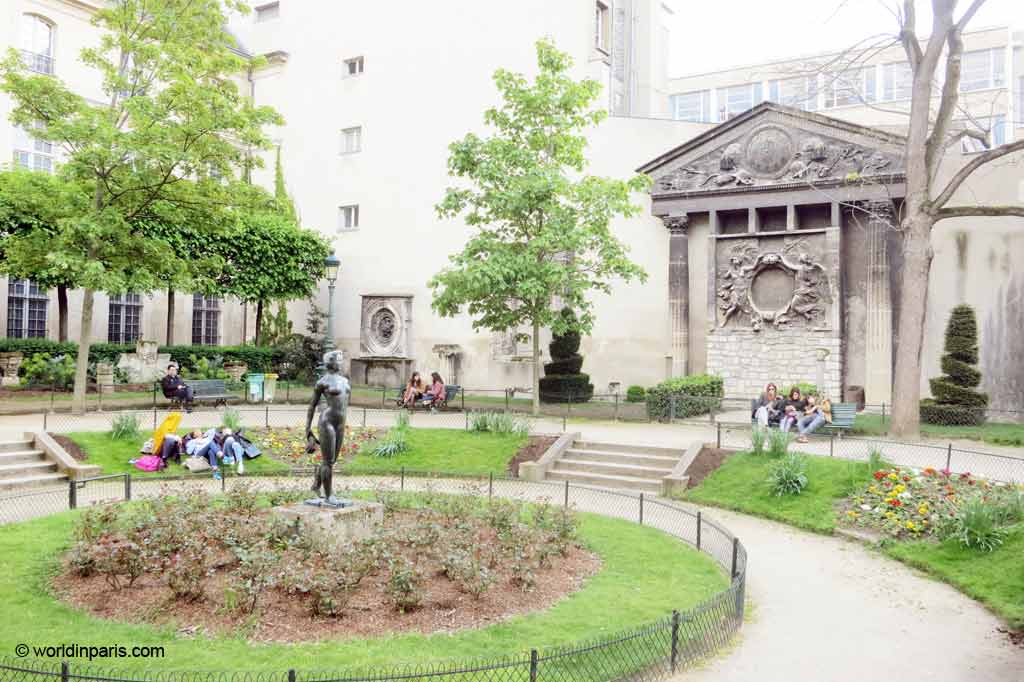
This pretty square behind Musée Carnavalet is an oasis of peace amid the bustle of the Marais district.
Besides being a green space where locals like to relax, it is also a kind of lapidary museum where you can see some remains from the Tuileries Palace.
As soon as you enter the Square Georges Caïn, you first see a bronze statue of a naked woman, ‘L’Aurore,’ in the middle of a rose bed. Another exciting piece to check out is ‘Le Rossignol Electrique,’ an electronic bird that starts singing whenever the wind blows.
To arrive at the Musée National Picasso, the next stop, leave the square at its top left corner and follow the street on the right.
5. Musée National Picasso
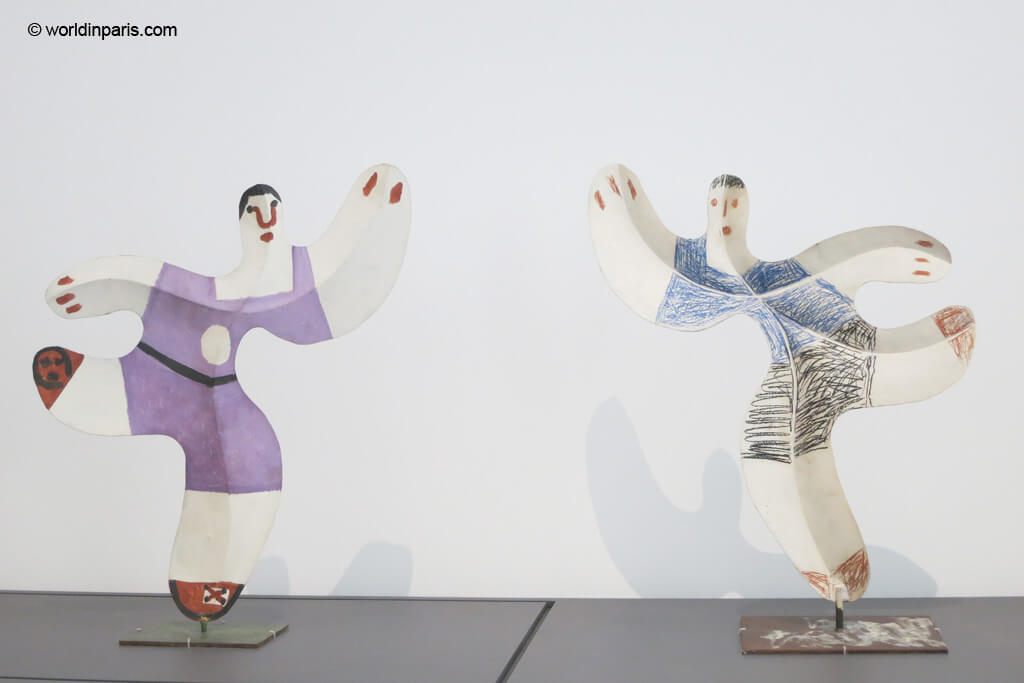
The Musée National Picasso is housed in the Hôtel Salé, a stunning private mansion listed as a historical monument. Commissioned by Pierre Aubert, lord of Fontenay, the hotel was built between 1656 and 1659 and boasts the typical architecture of Le Marais.
As the name suggests, the Picasso Museum showcases the works of Pablo Picasso, the famous Spanish painter. It also hosts interesting temporary exhibitions about Picasso’s friends. The Musée Picasso in Paris is the most important Picasso Museum in the world, followed by the museums in Barcelona and Málaga.
Less than a 10-minute walk from the Musée National Picasso, you will find the Marché des Enfants Rouges. Once you reach Rue de Bretagne, take the third street on the left to get to the next stop.
6. Marché des Enfants Rouges
The Marché des Enfants Rouges is Paris’ oldest covered food market. Built in 1615, it takes its name from the Hospice des Enfants Rouges (Red Children’s Hospital), a former children’s hospital where the orphaned children were all dressed in red.
Strolling around the Marché des Enfants Rouges, you can purchase fresh produce, from vegetables to cheeses to oysters. You can also pick up ready-to-eat dishes from international cuisines, like Moroccan and Italian, and enjoy them on the spot.
Walk back to Rue de Bretagne and proceed to the left for a few minutes. You will find yourself at the Square du Temple.

7. Square du Temple
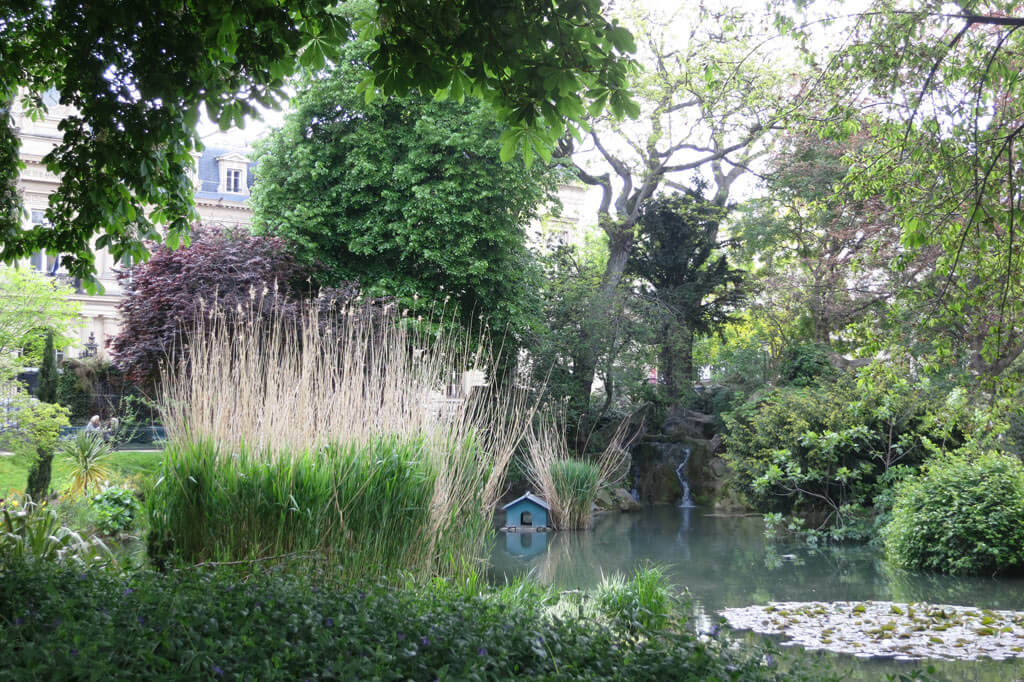
Located in front of the Mairie (City Hall) of the 3rd Arrondissement, the Square du Temple is a beautiful English-style garden built in the area that belonged to the Knights of the Temple back in the 13th century.
In Medieval times, the Templars drained and deforested this land. They built the Enclos du Temple, a vast enclosure that extended over 130 hectares and was protected by an 8m tall perimeter wall. It was like a city within the city of Paris!
Curious visitors will notice some strange blue lines on the pavement and sidewalk just in front of the Mairie. This is the exact layout of the Old Temple’s Keep, the prison where King Louis XVI and Queen Marie-Antoinette spent the last years before their execution. At that time, the Keep was the only Medieval vestige of the Old Temple, and it was completely razed in 1810 by the order of Napoléon I to avoid any memory or place of worship dedicated to the Monarchy.
Return to Rue de Bretagne and take the first street on the right (Rue des Archives). Walk it for around 8 minutes, and the Archives Nationales will be on your left. You can access Archives Nationales through Rue des Francs Bourgeois.
8. Archives Nationales (Hôtel de Soubise)
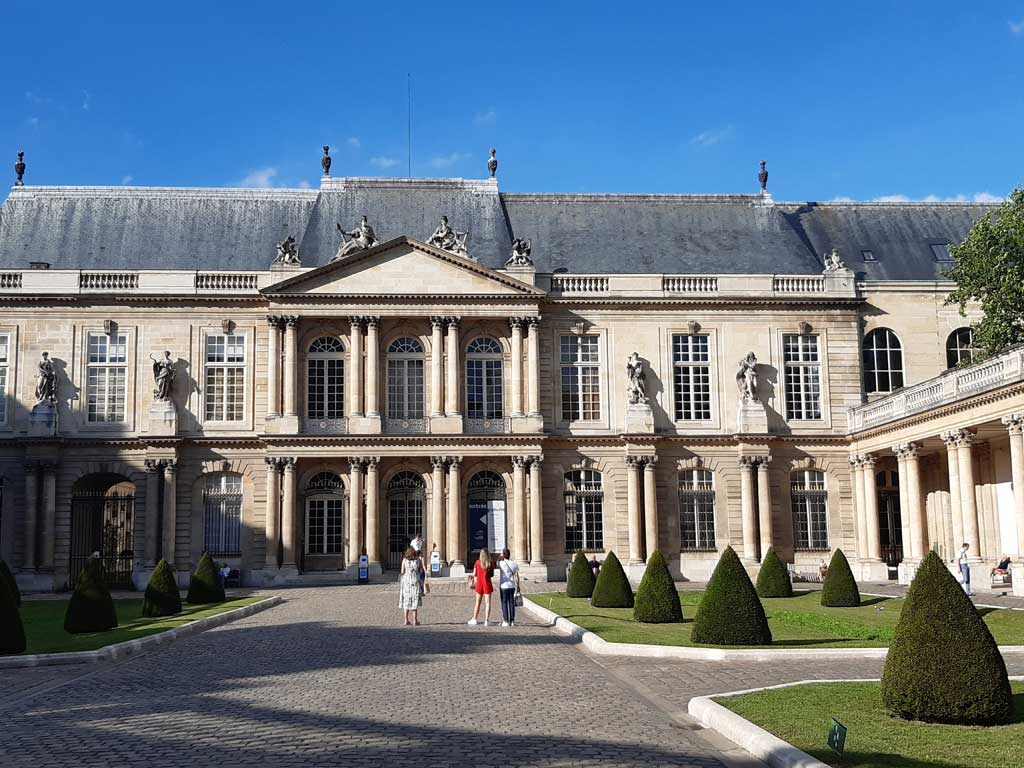
The Musée des Archives Nationales is housed inside the Hôtel de Soubise. It contains some of France’s most important historical documents and the Armoire de Fer (the Iron Chest). The Armoire de Fer is an impressive strongbox built in 1791 to hold essential documents produced by the New Regime, including the original of the French Constitution (1791).
Before leaving, check out the Hôtel’s secluded gardens, a great place for a relaxing break.
9. Crédit Municipal de Paris
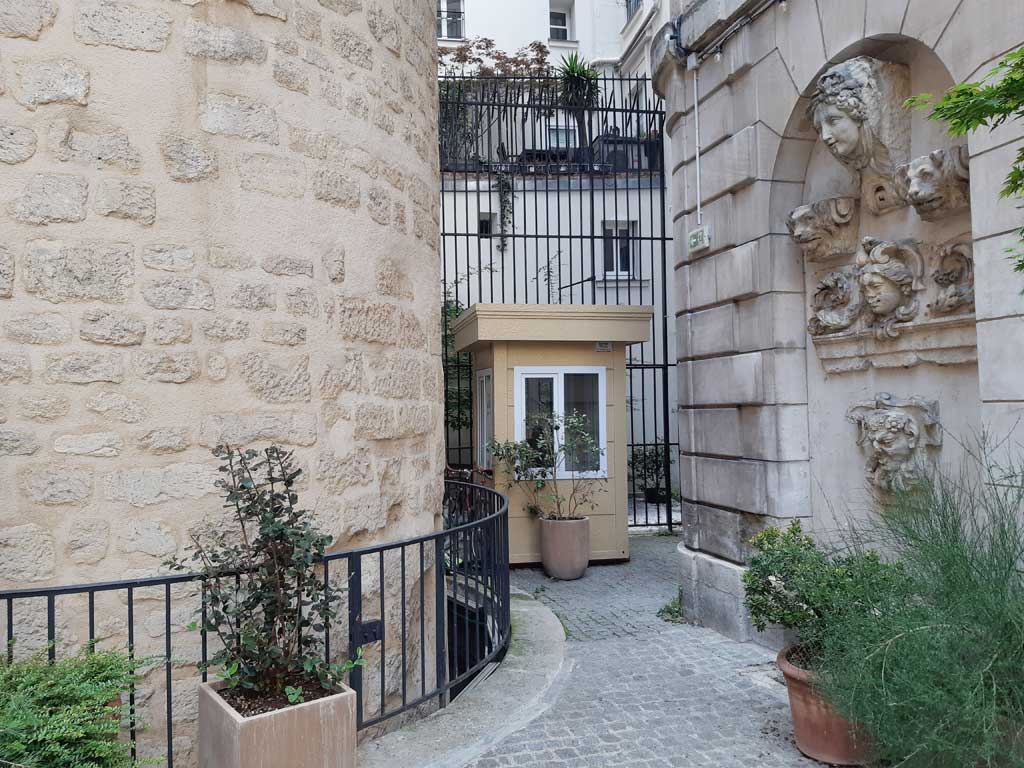
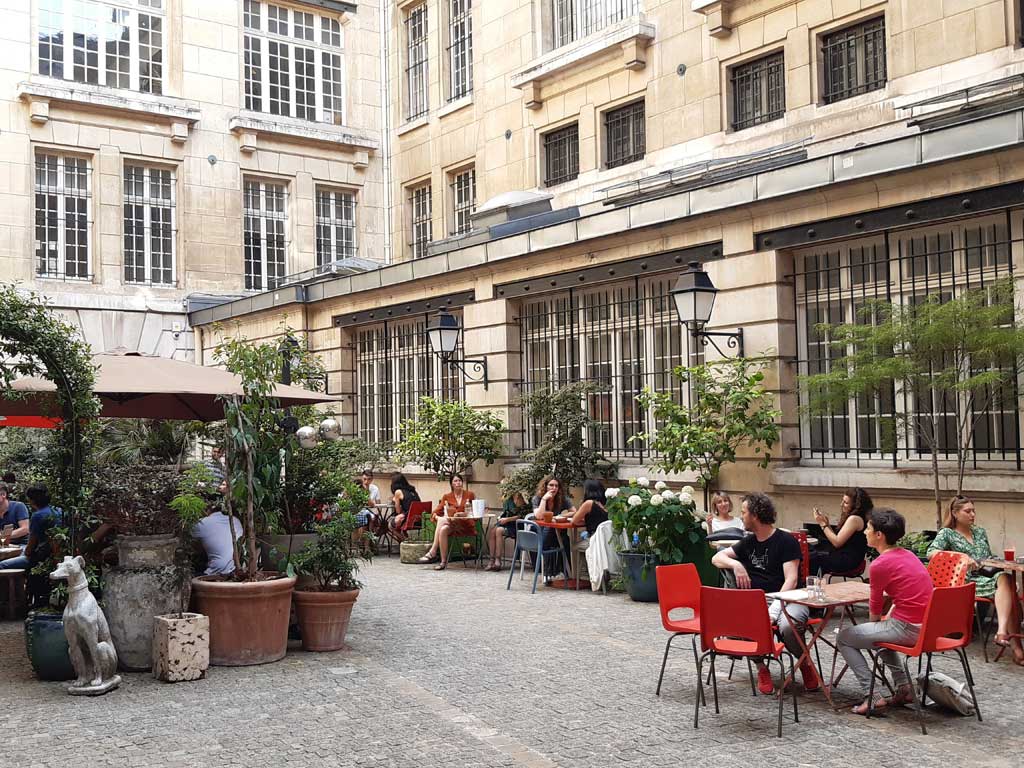
Across the street from the Archives Nationales, you will find the Crédit Municipal de Paris (CMP). Formerly known as ‘Mont de Piété,’ is the oldest financial institution in Paris.
Since 1637, the institution has practiced pawn broking, a form of credit that consists of pawning a valuable object in exchange for an immediate loan representing 50 to 70% of the object’s value on the public auction market. The Crédit Municipal also serves as a bank and auction house.
The Crédit Municipal is located in a mansion built on a former convent, itself erected on the former walls of Philippe-Auguste (XIIth century), demolished around 1535. The layout of this ancient enclosure and the remains of an old tower can still be seen in the courtyard of this establishment. During the good season, there’s an outdoor terrace bar that belongs to Griffon.
10. Medieval Houses Rue François Miron
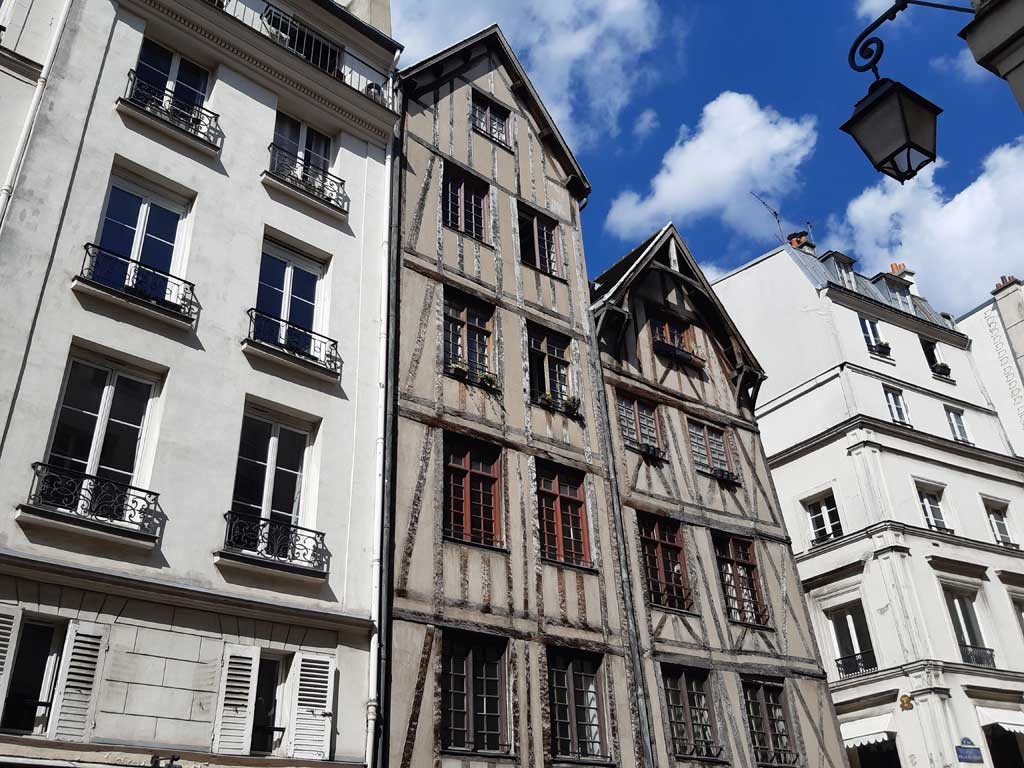
Rue François Miron is one of the oldest streets in Paris. Here, you can marvel at gorgeous half-timbered houses dating back to Medieval Paris.
For centuries, these tall and skinny buildings, the Maison du Faucheur and Maison du Mouton (House of the Reaper and House of Sheep), were considered the city’s most ancient ones. Nonetheless, the houses in Rue François Miron are a must-see in Le Marais thanks to their crookedness.
From Rue François Miron, head to Rue du Pont Louis-Philippe. Your next stop, Rue des Barres, is the first street on the right.
11. Rue des Barres
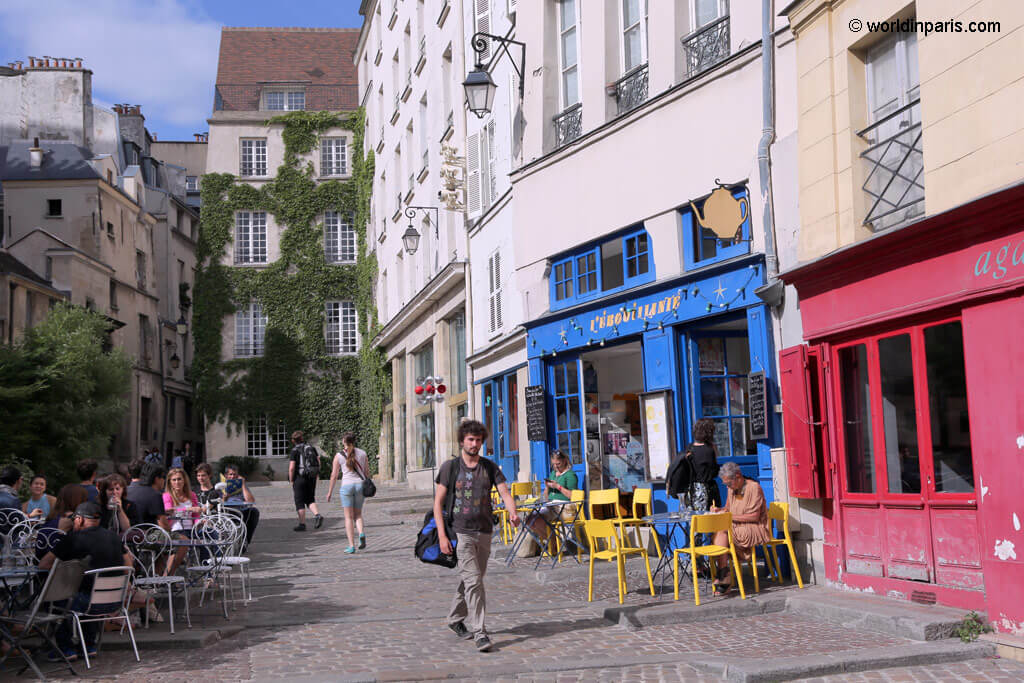
The lovely Rue des Barres is located between the Church of St Gervais-et-Saint-Protais and the Square Couperin. It’s one of the oldest streets in Le Marais and also one of the prettiest. Here, you can see a few half-timbered houses still standing in the city, as well as the 7th-century St Gervais-et-Saint-Protais Church.
Rue des Barres is the last stop of this Le Marais walking tour. From here, you can take the metro (Pont Marie station, line 7).
If you are in the mood for more walking and it’s not too late, check out this self-guided Paris chocolate tour, which explores the best chocolate shops in Le Marais.
You can also walk towards the Seine River and cross Pont Louis-Philippe to visit Ile Saint-Louis. Curious about what there is to do here? Check out my post on the best things to do in Ile Saint-Louis.

